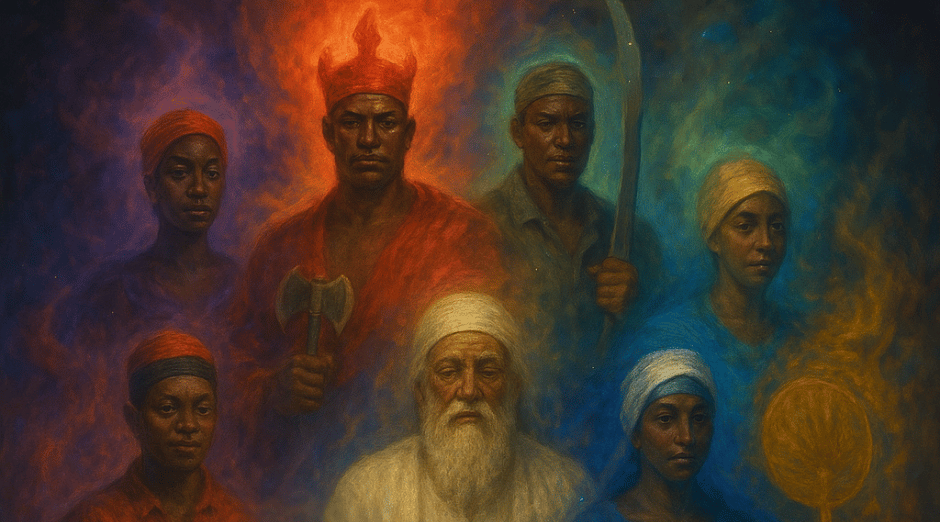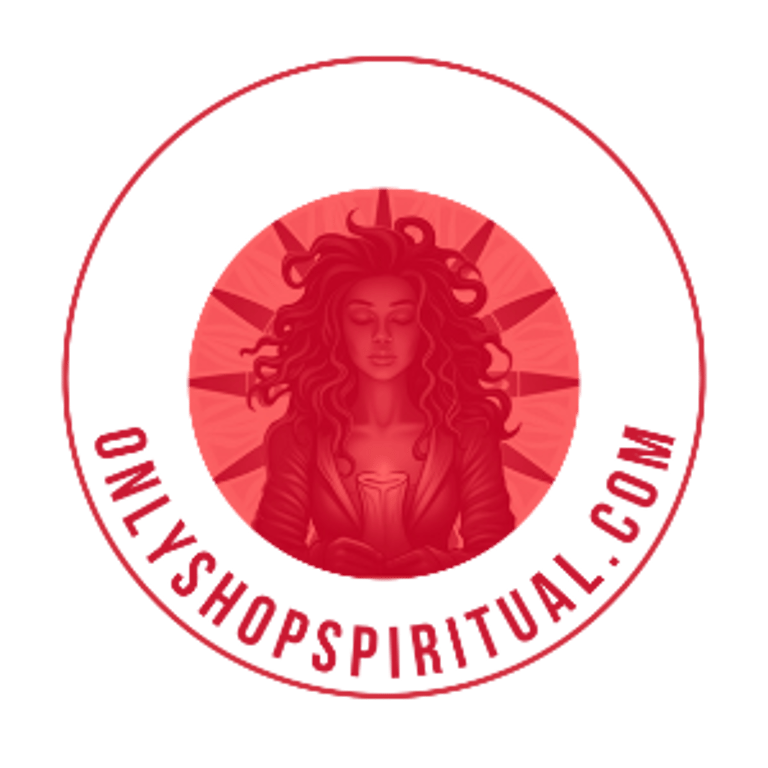The Truth About the Seven African Powers
This post explores the truth behind the Seven African Powers, clearing up the common confusion with the Orishas and bringing light to their true origins as ancestral spirits from seven African nations.
ATR PRACTICES & TEACHINGS


In Lucumí, Santería, and other Afro-Caribbean traditions, you’ve probably seen candles or spiritual products labeled "The Seven African Powers." Most of them show images of seven well known Orishas: Eleguá, Obatalá, Yemayá, Shangó, Oshún, Oyá, and Ogún. Over time, this image became the go-to representation of the Seven African Powers, and it's commonly believed that these seven Orishas are what the term refers to.
Like you, I thought the Seven African Powers were the Orishas. That’s what we’ve seen in shops, on candles, and in a lot of the spiritual items sold today. The Seven African Powers represent the united spiritual force of seven African nations whose people were brought to the Americas through slavery and whose lineages now live through us in spirit.
The Misunderstanding
The idea that the Seven African Powers are just the seven most popular Orishas comes from modern interpretations. It makes spiritual work more digestible to the public, but it also waters down a much richer ancestral truth. While the Orishas are incredibly powerful, and calling on them collectively can bring guidance and strength, the original meaning of the Seven African Powers is rooted in ancestor veneration, not deity worship alone.
The Seven Nations Behind the Power
The real Seven African Powers refer to spirit guides from seven different African ethnic groups: Yoruba, Congo, Takua, Kissi, Calabari, Arará, and Mandinka. These were distinct African peoples, each with their own spiritual systems, traditions, languages, and ways of life. In Cuba and other parts of the Caribbean, descendants of these groups were forced to live together, pray together, and survive together. Over time, the spiritual forces of these nations merged to form what we now call the Seven African Powers.
Each of these nations carried with them spiritual knowledge and ancestral practices that show up in our ceremonies, our altars, our music, and our spiritual courts. When we speak of the Seven African Powers in their true form, we are speaking about the collective wisdom of these nations.
Yoruba
The Yoruba people of West Africa are the foundation of what we know today as Santería or Lucumí. Their spiritual system brought us the Orishas, Ifá, and deep ritual knowledge. Yoruba tradition teaches us how to connect to divine forces through ceremony, song, prayer, and initiation. The Orishas we work with come from this nation.
Congo
The Congo people of Central Africa brought with them the foundations of Palo Monte. Congo spirituality works deeply with nature, spirits of the dead, and powerful earth magic. This tradition teaches us how to work with ancestral spirits through sacred cauldrons and how to protect ourselves spiritually with plants, iron, and fire.
Takua
Takua is a lesser known nation, but in Cuba and other Afro-Caribbean traditions, it’s recognized as part of our ancestral lineage. While the specific details of Takua traditions may be more obscure today, the presence of this nation in the Seven Powers reminds us that many African ethnic groups were part of the diaspora, even those whose names aren’t as widely preserved.
Kissi
The Kissi people come from the area of modern day Sierra Leone and Guinea. They carried strong traditions of ancestor veneration, spiritual healing, and divination. Their presence in the Seven Powers reminds us of the influence of Upper Guinea in shaping spiritual practices throughout the Caribbean.
Calabari (Carabalí)
The Calabari people, also called Carabalí, come from the Calabar region in southeastern Nigeria and western Cameroon. They gave birth to the Abakuá society in Cuba, a powerful male secret society with its own language, rituals, and spiritual protections. Their strength, discipline, and warrior energy remain active in our traditions today.
Arará
The Arará people, from the region that is now Benin and Togo, brought the Vodun tradition with them. In Cuba, they preserved their spiritual lineages, songs, and ceremonies, maintaining a unique identity while blending with Lucumí practices. Their rituals often include deities like Mawu Lisa and Sakpata, and their drum rhythms and dances still exist today in Arará communities.
Mandinka
The Mandinka people of Mali and the Senegambia region were some of the earliest to arrive in the Americas. Many were Muslim, but they also carried strong ancestral traditions. Their spiritual legacy includes a deep connection to oral history, music, and moral discipline. In spiritual work, a Mandinka guide may present themselves as a wise elder or protector.
Why This Matters
When we call on the Seven African Powers with full knowledge of who they truly are, we are honoring the strength, endurance, and wisdom of our ancestors. These spirits are guides who walk with us, who have been through suffering and still hold power. They each represent a nation, a worldview, and a spiritual strength that lives on through us.
Understanding the Seven African Powers as ancestral forces helps us connect more deeply to our spiritual roots. It reminds us that the Orishas are part of a larger system that includes our ancestors, spirit guides, and the nations they came from.
When you set up your altar, light a candle, or call on the Seven Powers, try speaking to each of them by their nation. Honor their differences. Acknowledge their survival. And remember, the power is in the blood, the soil, the songs, and the spirits that never left us.
May we always remember where these true powers come from. Asè
